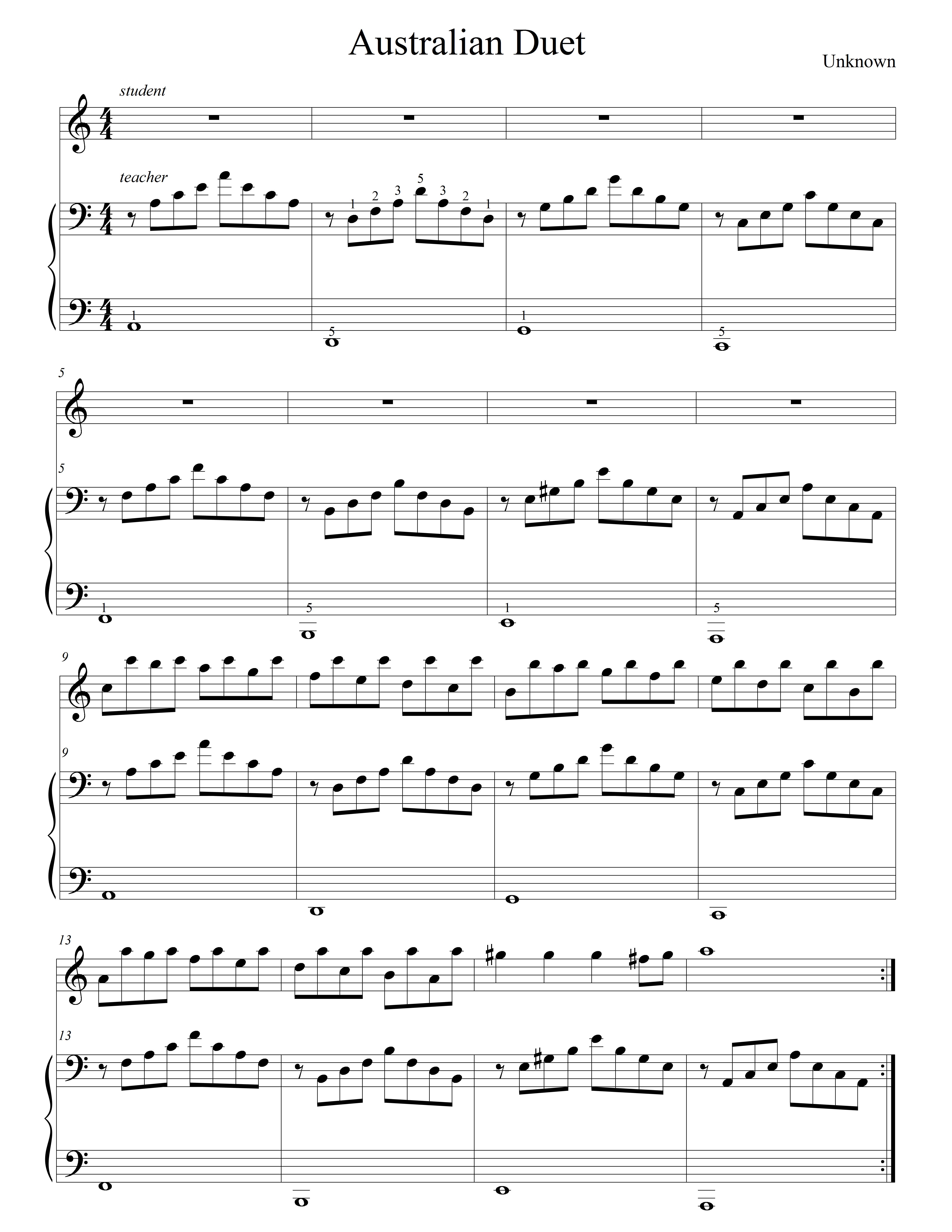My piano students need to experience creative freedom towards the end of the first lesson, after they have been intently focusing on the “what to do” to play piano. The first piano lesson? Yes, this freedom called “improv” is the spark that inspires them to create music on their own and also gives them the experience of playing great sounding music from day one. I see it in their eyes every time “I can do this!”, after we finish playing Australian Duet together. They leave the lesson encouraged for more, rather than overwhelmed. Often, they will bring back to the next lessons what they have created during the week, which is a great jump start for improv/comp sessions using “their” music, no boredom here!
To give them the feeling of “letting their fingers go” at the first lesson, the song Australian Duet has been a great tool. First of all, they are learning to play with someone else in a duet. I will follow them while they are learning and in subsequent lessons shift to having them follow me while saying “1 & 2 & 3 & 4 & . . . “ which gives them practice matching the note with rhythm counting. Once they do their duet part twice through, then their improv starts. I give them the parameter of any white keys and tell them “take off and create your own music.”
Most students have no hesitation. The few that need more encouragement I help by giving more specifics “start with one note and go to another one and then another”. With just a little help, they soon explore the keys on their own and love the freedom to create music. I keep my part (left person) going following the chord progression and vary it with different rhythms and notes while they are doing improv. When students gain experience, they learn to listen to what is being created, so we are playing off each other. They absolutely love it and will ask to do it in the next lesson if I forget. I have done it in recitals with new students, and students have done it together in recitals with parents or siblings. Everyone loves listening to the beauty of this song. I did it with another piano teacher at my niece’s wedding and people thought it was a recording.
For the duet, the student learns 3 octave “ladders” – C to C, B to B, A to A. Using just their pointer fingers, they start on the “ground” C (above Middle C) and jump to the “top of the ladder”, the C above played with RH, then they “step on down the ladder” with the LH moving up to B while always repeating the top C with the RH as the LH steps down the scale. Next is the B ladder, then the A ladder in the same way. The ending is G# 3x, F# 1x, G# 1x, ending on A 1x. A young student made up the lyric “bubblegum is so fun” to help remember how many times to play the G#.
The teacher plays the left side of the duet using this chord progression: Am, Dm, G, C, F, Bdim, E, Am and repeats for as long as needed. The intro is the teacher playing it once through, then the student comes in when it starts repeating, matching note for note. The teacher’s LH starts on the 2nd A below Middle C. The RH repeats the note an octave above and continues playing the chord and going up to the 3rd octave. Example: A, A, C, E, A then comes back down the chord E, C, A. Use the same pattern for the next chords, going below for the D. Then step your LH hand down.
For additional improv ideas see “12 Tips To Begin Improvisation” by Cherie Yurco


